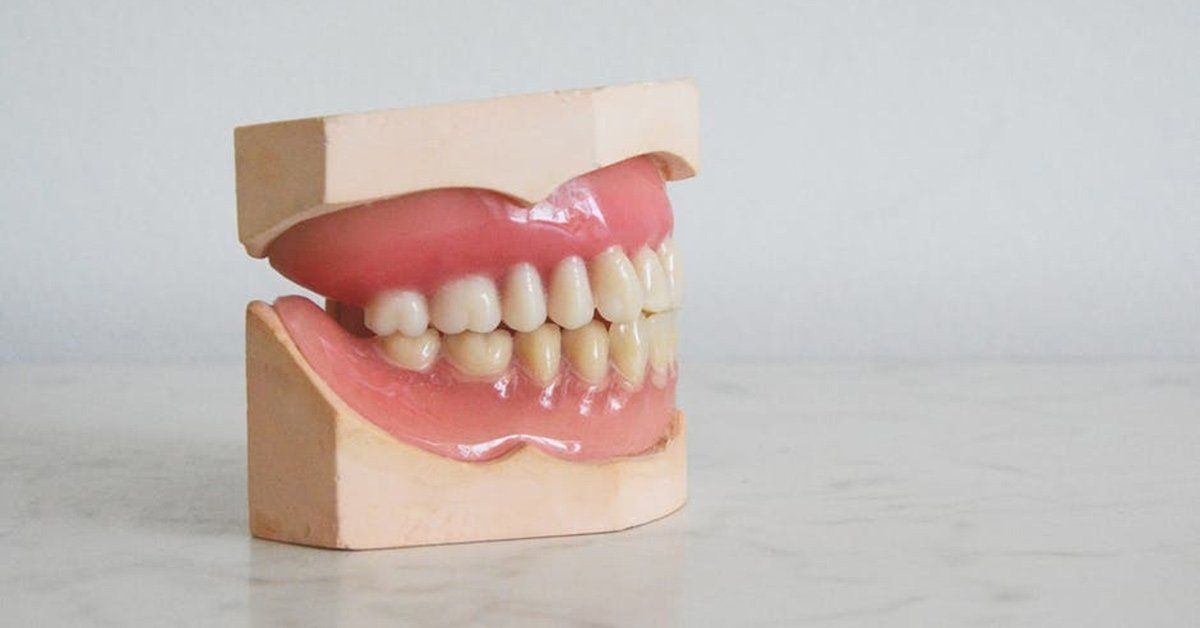Types Of Dentures | Complete Denture | Partial Dentures
There are considerations to make when choosing your dentures, such as the type. This guide explains the differences between complete and partial dentures.
Whoever coined the term 'false teeth' did a disservice to the mouths of everyone who came after. While many technologies currently exist to replace missing teeth, the term 'false' has faded away, and for good reason.
The mouth is a complex system and every part that's missing strains the remaining pieces. While replacing a single tooth is easy with the marketing-friendly 'implant' more damage needs larger fixes. That's where partial dentures and complete dentures come in.
These amazing devices provide a natural look and bite shape that keeps people eating and enunciating for decades. Vanity pushes people to downplay incidents of tooth loss, but of the 32 you start with, most adults operate with 25 or less.
If you're missing a few teeth and finding it difficult to enjoy eating and conversing, this is the information you need.
How Natural is Natural?
Dentists build dentures to resemble the shape, feel, and size of original teeth whenever possible. using scanning technology and 3D printers, they build teeth that look and operate like the originals.
Your dentist makes adjustments to fill in weak spots and symmetry from the other side of the mouth is taken when no scan of an already missing tooth is available.
Partial Dentures
You might be confused about what exactly a partial denture covers. This is because there are multiple dental appliances that fall under the umbrella of partial dentures but come by other names.
You may have heard of bridges, all-on-three, or all-on-four implants. Each of these covers an area of missing teeth in the mouth. In the case of bridges and all-on implants, teeth on either side of an installation site are used as anchors.
Partial dentures fit into a gap in different ways. They might be set in with a temporary adhesive or anchored with visible or subtle clips. The options come down to availability, price, and the underlying conditions of your mouth.
The density of your jawbone and the level of shrinkage through the gum line will be factors that determine the strength of attachment options.
No matter what option you chose, it's important to your overall oral health to deal with missing teeth sooner than not.
Installation
To get a partial denture installed, a dentist removes any damaged teeth or intervening teeth. It's best to have all the removals from a given area done at once and to allow the area to fully heal. This provides a consistent base to attach the denture.
When it is important to have teeth usable fast, dentists rely on immediate dentures. This is a 'good enough' temporary fixture that fills the gap and helps protect the gumline while healing occurs. Because the gumline will shrink as healing occurs, eventually you'll replace this temporary option with a conventional denture.
Permanent dentures require anchors to keep them in place without slipping, which allows gaps to form. Anchors are placed in the forms of wire cages on crowned and reinforced teeth on either side. Clasps are also used to hide the attachment and give a more natural effect.
The installation of a partial denture differs depending on if the denture is to be permanently affixed or meant to be removable. Additionally, an immediate denture is always made to be replaced by a conventional denture.
Maintenance
Most partial dentures are permanent and maintained like any other teeth. They need brushing and rinsing to keep them free from debris and maintain their finish.
Flossing isn't usually necessary along the denture and needs to be done carefully around anchors and clasps. Otherwise, you risk damaging those mechanisms.
For a removable partial denture, the same types of overnight soaks and larger, more vigorous brushes can be used.
Lifecycle
The materials used to make dentures last a long time. Most of the 'teeth' are made the same as implants with different cores and finishes depending. The majority of dentures are porcelain or a composite resin.
These teeth fit onto a pink or gum-colored shell that fits into the mouth. The lifecycle of dentures varies greatly with some lasting between five and thirty years. How well the dentures fit and what other changes to your mouth occur will have an impact on longevity.
By and large, you need to replace a denture to adjust fit more often than you need to replace them from wearing out.
Complete Dentures
Even complete dentures aren't necessarily complete. If either the top or bottom row of teeth is replaced that is still a complete denture.
Complete dentures are rarely permanent. Most are held in with a form of suction and additional adhesive when necessary. Newer denture technology installs implants under the gumline in the jawbone that creates an anchoring surface that holds teeth in place without adhesives.
Installation
Dentists install a complete denture in the same way as a partial. They take a scan and then shape the arch of the denture to attach to the gumline. It is important that dentures line up well to provide a strong biting surface between the top and bottom arches.
Immediate and conventional dentures are also used in complete dentures and full sets.
It can take eight to twelve weeks for the gums to heal after a set of extractions.
Maintenance
A complete denture or full set is best removed for scrubbing them clean. Without the anchoring of other teeth, it's difficult to apply the right kind of force to clean them otherwise.
Removing and then reapplying dentures is also a good way to find and remove any particulates that may have accumulated between the arch and the gumline.
Lifecycle
The lifecycle of complete dentures is on the higher end of the spectrum. A full set needs fewer adjustments over a lifetime than partials as there is less material that may shift and require refitting.
Smile Bright
Getting a full set of teeth working is important to maintaining health. Whether you need an implant, partial dentures, or complete dentures the end goal is the same.
When you're ready to improve your life and preserve the biome of your mouth, reach out to us and see how much your life can change. The team at The Maryland Center for Complete Dentistry offers services to install, adjust, and maintain partial and complete dentures.




